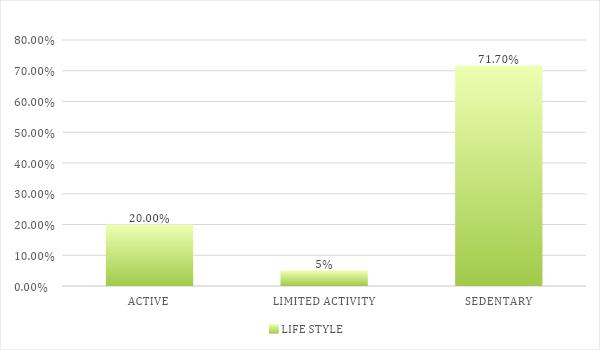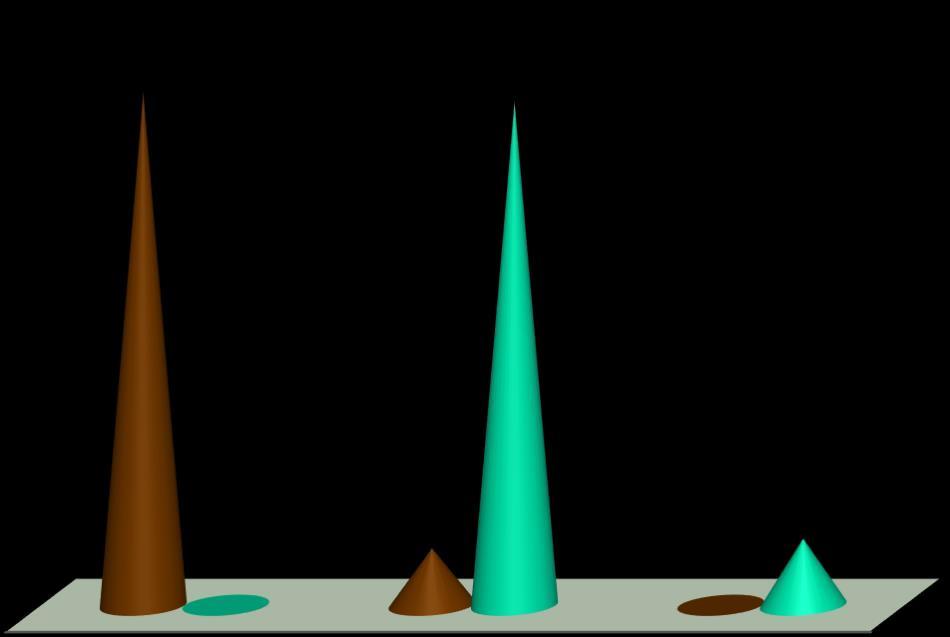International Journal of Healthcare Sciences ISSN 2348-5728 (Online)
Vol. 10, Issue 2, pp: (19-25), Month: October 2022 - March 2023, Available at: www.researchpublish.com

International Journal of Healthcare Sciences ISSN 2348-5728 (Online)
Vol. 10, Issue 2, pp: (19-25), Month: October 2022 - March 2023, Available at: www.researchpublish.com
*1Dr. G. Bhuvaneswari, 2 S. Rashika, 3J. Cathrin
Dept.of Community Health Nursing, Saveetha College of Nursing, SIMATS, Chennai, Tamil Nadu, India.
DOI: https://doi.org/10.5281/zenodo.7185104
Published Date: 11-October-2022
Abstract: Breast cancer (BC) is the commonest malignancy among women globally. Breast cancer has ranked number one cancer among Indian females with age adjusted rate as high as 25.8 per 100,000 women and mortality 12.7 per 100,000 women. A large number of factors are identified as risk factors for breast cancer. Aim; To determine the effectiveness on capacity building programme on breast self examination and knowledge on warning sign on breast cancer among women's. Methodology: Quasi experimental research design was adopted for the current study to assess the effectiveness on capacity building programme on breast self-examination and knowledge on warning sign on breast cancer among women's at selected setting. The samples who met the inclusion criteria 60 women’s were selected by using non probability purposive sampling technique. The demographic and pretest knowledge warning sign of breast cancer and breast self-examination was collected by using a self-structured questionnaire. Followed by capacity building programme was conducted through video assisted teaching and selfbreast examination demonstration performed by researcher to simulator. Post test was conducted same tools by 8th day.TheCollecteddatawereanalyzed usingdescriptivestatisticsandinferentialstatistics.Results:Thepretest mean score of knowledge was 7.72±2.43 and the posttest mean score was 17.85±2.29. The calculated paired ‘t’ test value of t=21.547 was found to be statistically highly significant at p<0.001 level. Conclusion: The capacity building programmewas moreeffective methodto createtheawarenessonbreast self-examinationandwarningsignofbreast cancer among all women’s.
Keywords: capacity building programme, Breast self- examination, Warning Sign, Breast cancer.
Breast cancer (BC) is the commonest malignancy among women globally 1 A large number of factors are identified as risk factors for breast cancer. Late age at first pregnancy (greater than 30 years), single child, late age at menopause are some of them. A high fat diet is also identified as a risk factor. Physical activity is found to be protective for breast cancer. The sudden changes towards affluent life styles have reduced the physical activities to a minimum and increased the consumption of diets rich in fat. High fat diets during the pubertal age and obesity in the post menopausal age are risk factors for breast cancer.2
Worldwide, female breast cancer has now surpassed lung cancer as the most commonly diagnosed cancer. An estimated 2,261,419 new cases were diagnosed in women across the world in 2020. More women in the United States are diagnosed with breast cancer than any other type of cancer, besides skin cancer.
International Journal of Healthcare Sciences ISSN 2348-5728 (Online)
Vol. 10, Issue 2, pp: (19-25), Month: October 2022 - March 2023, Available at: www.researchpublish.com
The disease accounts for 1 in 3 of new female cancers annually. Breast cancer has ranked number one cancer among Indian females with age adjusted rate as high as 25.8 per 100,000 women and mortality 12.7 per 100,000 women. Breast cancer is the commonest malignancy among women globally. Breast Cancer is the most common cancer in women in Chennai and accounted for 30.7% of all cancer cases in women in Chennai. This almost amounts to one third of all cancers. This means, every third cancer detected in a woman in Chennai will be a breast cancer. (NGO (2020).3
In 2020, there were 2.3 million women diagnosed with breast cancer and 685 000 deaths globally. As of the end of 2020, there were 7.8 million women alive who were diagnosed with breast cancer in the past 5 years, making it the world’s most prevalent cancer. There are more lost disability-adjusted life years (DALYs) by women to breast cancer globally than any other type of cancer.
The age-specific incidence rate of BC was about 99.2 per 100,000 in the age (45–49) years, followed by 92.3/100,000 females in the age (60–64) years. Early detection of BC has an important part in decreasing mortality and morbidity and (BSE) breast self examination is an important screening way for early detection, but women in third world countries do not practice BSE for many reason. It is also reported that more than half (60%) of the Breast Cancer deaths occur in economically developing countries. (Hortobagyi GN, et al., 2012)5
The objective of the WHO Global Breast Cancer Initiative (GBCI) is to reduce global breast cancer mortality by 2.5% per year, thereby averting 2.5 million breast cancer deaths globally between 2020 and 2040. Reducing global breast cancer mortality by 2.5% per year would avert 25% of breast cancer deaths by 2030 and 40% by 2040 among women under 70 years of age. The three pillars toward achieving these objectives are: health promotion for early detection; timely diagnosis; and comprehensive breast cancer management. 6
Breast cancer typically produces no symptoms when the tumor is small, later on when it has grown, it could be represented by one or more of the following symptoms and signs: painless lump in the breast, lump under the armpit, breast pain, swelling or thickness of the breast’s skin, spontaneous discharge of the nipple particularly blood, and erosion or inversion in the nipple. Screening for early detection and diagnosis of diseases and health conditions is an important public health principle. (R.Unkels et.,al 2017)7
By providing public health education to improve awareness among women of the signs and symptoms of breast cancer and, together withtheirfamilies,understandtheimportanceofearlydetectionandtreatment, more womenwouldconsult medical practitioners when breast cancer is first suspected, and before any cancer present is advanced. This is possible even in the absence of mammographic screening that is impractical in many countries at the present time. Breast self-examination (BSE), clinical breast examination, and mammography.8
On BSE, the woman lies down on her back and places her right arm behind the head. The exam is done while lying down, not standing up. This is because when lying down, the breast tissue spreads evenly over the chest wall and is as thin as possible, making it much easier to feel all breast tissues. The women can use the finger pads of the three middle fingers of her left hand to feel for lumps in the right breast. Use overlapping dime-sized circular motions of the finger pads to feel the breast tissue. While standing in front of a mirror with her hands pressing firmly down on her hips, look at the breasts for any change of size, shape, contour, or any dimpling, redness, or scariness of the nipple or breast skin. The pressing down on the hips position contract the chest wall muscle and enhances any breast changes by examining each underarm while sitting up with her arm only slightly raised so you can easily feel in the area. Raising the arm straight up tightens the tissue in this area and makes it harder to examine. (Kassaw et.,al 2018).9
Though only BSE is an effective tool to early detection of BC but it is simple, non-invasive, convenient, inexpensive and available to all women, which helps the woman in early detection of any abnormal lump or mass in her breast but, a percentages of women not even know how to perform BSE in rural villages, hence the researcher interested to conduct the effectiveness on capacity building programme on breast self examination and knowledge on caution sign on breast cancer among women's at selected Village. The aim of the current study is to determine the effectiveness on capacity building programme on breast self examination and knowledge on caution sign on breast cancer among women's at selected setting.
Quasi experimental research design was adopted for the current study to assess the effectiveness on capacity building programme on breast self-examination and knowledge on warning sign on breast cancer among women's at selected setting.
International Journal of Healthcare Sciences ISSN 2348-5728 (Online)
Vol. 10, Issue 2, pp: (19-25), Month: October 2022 - March 2023, Available at: www.researchpublish.com
Study Setting: The Study was conducted among women, who are working at a plastic company in ShanmugapuramChennai-99. The study was conducted during the period of 22.02.2022 to 27.02.2022. The importance of the study was explained and formal permission was obtained from the Management of plastic company. The formal permission was obtained from the SRB at SIMATS. The samples who met the inclusion criteria were selected by using non probability purposive sampling technique. A total of 60 women are who fulfills and meets the inclusion criteria were recruited as study participants. The inclusion criteria includes all who are available during the period of data collection procedure, women who aware on breast self-examination, previous breast surgery and can able to read, write English and Tamil. The exclusion criteria for the studyparticipants women, who are not willing to participate, who have undergone breast surgeries, who have been exposed to previous programmes about breast self-examination. Informed Consent: The purpose of the study was explained clearly in depth to each of the study participant and a written informed consent was obtained from them. PreAssessment: The demographic and pretest knowledge warning sign of breast cancer and breast self-examination was collected by using a self-structured questionnaire. Followed by capacity building programme was conducted through video assisted teaching and self-breast examination demonstration performed by researcher to simulator. Post test was conducted same tools by 8th day. The Collected data were analyzed using descriptive statistics and inferential statistics.
Among 60 study participants, with regards to age group of women 25 (41.7%) were aged between 18 – 35 years and 20 (33.3%) were 36-55 years. With regards to Marital status, 35(58.3%) were Married, 22(36.7%) were unmarried. With regards to the educational qualification, 25 (41.6%) women’s had primary school education and 17(28.6%) were had illiterate. With regards to monthly income 32(53.3%) had a family monthly income of Rs.5,000 to 8,000/- With regards to dietary pattern 57(95%) were Non - vegetarian. With regards to the Economic status 35 (58.3%) belonged to Lower economic class family. With regards to the Life style 43(71.7%) were Sedentary.

Figure 1: Percentage distribution
style
Assessment of pre test and posttest level of knowledge on breast self examination and caution signs of breast cancer among the women.
Table 1: Frequency and percentage distribution of pre test and post test level of knowledge on breast selfexamination and caution signs of cancer N=60
Knowledge on breast selfexamination and warning sign of breast cancer
Inadequate Knowledge Moderate Knowledge Adequate Knowledge No. % No. % No. %
Pretest 54 90.0 6 10.0 0 0 Post Test 0 0 53 88.33 7 11.67
The current study results shows that in the pretest, 54(90%) had inadequate knowledge and 6(10%) had moderate knowledge. Whereas in the post test, 53(88.33%) had moderate knowledge and 7(11.67%) had adequate knowledge.
International Journal of Healthcare Sciences ISSN 2348-5728 (Online)
Vol. 10, Issue 2, pp: (19-25), Month: October 2022 - March 2023, Available at: www.researchpublish.com
Pretest Post Test
100 90 88.33 90 80 70 60 50 10 11.67 10 0 0 0 Inadequat e Moderate Adequate Level of Knowledge breast self examination and caution signs of breast cancer
Fig 2: Pictorial Representation of level of knowledge in pretest and posttest. Effectiveness of capacity building programme of breast self-examination and caution signs of breast cancer among women
Table 2: Comparison of pretest and posttest level of knowledge on breast self-examination and caution signs of breast cancer among the women
Variables Test Mean S.D Paired ‘t’ test Value
Knowledge
***p<0.001, S – Significant




Pretest 7.72 2.43 t = 21.547 p = 0.0001 Post Test 17.85 2.29
The table 3 shows that, the pretest mean score of knowledge was 7.72±2.43 and the post test mean score was 17.85±2.29. The calculated paired ‘t’ test value of t=21.547 was found to be statistically highly significant at p<0.001 level. This clearly infers that administration of video Capacity building programme among women was found to be effective in improving the level of knowledge in the post test.
Table 3: Association between post-test level of knowledge on breast self-examination with selected demographic variables of the women
Demographic Variables
Inadequat e Moderate Adequate Chi-Square Test
No. % No. % No. %
Age group χ2=2.29881 d.f=2 p= 0.3168 S*
Young ( 18-35) - - 30 50.0 2 3.3 Middle ( 36-55) - - 12 20.0 2 3.3 Older ( above 55) - - 11 18.3 3 5.0
Marital status χ2=8.44347 d.f=3 p= 0.03768 NS Married - - 12 20.0 1 1.7 Unmarried - - 12 20.0 2 3.3 Divorced - - 25 41.7 1 1.7 widow - - 4 6.7 3 5.0 Educational level χ2=0.703248 d.f=1p=0.4017 NS Illiterate - - 20 33.3 3 8.3 Primary school 9 15 2 3.3

International Journal of Healthcare Sciences ISSN 2348-5728 (Online)
Vol. 10, Issue 2, pp: (19-25), Month: October 2022 - March 2023, Available at: www.researchpublish.com
Higher secondary school - - 24 40.0 2 3.3
Diploma graduate - - - - -Monthly income
χ2=0.95378 d.f=1 p= 0.865 NS <5000 - - 15 25.0 3 5.0 5,000-8,000 - - 23 38.3 2 3.3 8,000-10,000 - - 10 25.0 1 1.7 >10,,000 - - 5 8.3 1 1.7
Dietary pattern
χ2=0.472107 d.f=1 p= 0.492 NS Non-Vegetarian - - 37 61.7 5 8.3 Vegetarian - - 23 38.3 2 3.3 Economic status
Upper class - - 15 25.0 3 5.0 Middle class - - 23 38.3 2 3.3 Lower class 15 25.0 2 3.3
Life style
χ2=0.475298 d.f=3 p= 0.8762
Active - - 18 30.0 3 5.0 χ2=0.9087 d.f=1 p= 0.432 NS Limited activity - - 27 45.0 2 3.3 Sedentary 15 25.0 2 3.3
P<0.01 S – significant, N.S-Nonsignificant
The demographic variable such as age shows significant association with posttest level of knowledge on breast selfexamination.
Breast cancer is a serious public health issue and the number one killer of women. Worldwide, there are about 1.15 million newly diagnosed instances of breast cancer. each year.1 diagnosis of a disease in its advanced stages increases the risk of death among women, which includes carcinoma of the breast. If caught early enough, breast cancer is a malignancy that can be prevented. Early breast cancer identification not only raises the likelihood of a successful but also increases the likelihood of survival. The aim of the study was to assess the effectiveness of capacity building programmes on breast selfexamination and knowledge on caution signs of breast cancer among adult women. The demographic variables of present study despites that, Among 60 study participants, with regards to age group of women 25 (41.7%) were aged between 18 –35 years and 20 (33.3%) were 36-55 years. With regards to Marital status, 35(58.3%) were Married, 22(36.7%) were unmarried. Withregards to the educational qualification, 25 (41.6%) women’s had primaryschool educationand 17(28.6%) were had illiterate. With regards to monthly income 32(53.3%) had a family monthly income of Rs.5,000 to 8,000/- With regards to dietary pattern 57(95%) were Non - vegetarian. With regards to the Economic status 35 (58.3%) belonged to Lower economic class family. With regards to the Life style 43(71.7%) were Sedentary Rajan Kumar Prusty et.al,(2020)conducted a study on “Knowledge of Symptoms of Risk Factor of Breast cancer among women”. It was a crosssectional studyconducted at Prabhadevi, Mumbai. Structured questionnaire was used to collect data pertainingto awareness of breast cancer. The sample for study was 480 at aged 18-55yrs.The study found that around half (49%) of women were aware of Breast cancer. The women who were aware of Breast cancer consider lump in the breast. The study shows that in the pretest, 54(90%) had inadequate knowledge and 6(10%) had moderate knowledge. Whereas in the post test, 53(88.33%) had moderate knowledge and 7(11.67%) had adequate knowledge. Hence the hypothesis was significant. This finding is being supported by Mushood G et.al,(2016) A descriptive cross sectional study on Awareness and Knowledge of Breast cancer, symptoms and screening among female” the mean age of participants was 39.25yrs with 42% age 31to 40yrs .None of the participants had clinical breast examination in past years and only 7.5% participants had heard of mammography.
The Effectiveness of capacity buliding programme of breast self examination among women selected setting. The study shows that, the pretest meanscore ofknowledge was 7.72±2.43 and the post test mean score was 17.85±2.29.The calculated paired ‘t’ test value of t=21.547 was found to be statistically highly significant at p<0.001 level. This clearly infers that administration of video Capacity building programmes among women was found to be effective in improving the level of knowledge in the post test. This finding is being supported by Chinna kannan B (2012) conducted a quasi-experimental research study to assess the effectiveness of Video assisted teaching programme on the knowledge among 248 nurses on
International Journal of Healthcare Sciences ISSN 2348-5728 (Online)
Vol. 10, Issue 2, pp: (19-25), Month: October 2022 - March 2023, Available at: www.researchpublish.com
breast selfexamination. The samples were selected bycluster samplingtechnique inPHC‟s ofSalemdistrict. Data collected byusingclosed ended questionnaireandobservationalchecklist.Data wereanalyzedbydescriptiveandinferentialstatistics The overall pre-test mean knowledge score was 28.13±7.55 (42.61%) whereas in post-test it was 57.71±3.94 (87.44%) revealing 44.83% enhancement of knowledge score. Highly significant difference was found between the total knowledge scores of pre and post test and area wise score values of pre and post test (P<0.01) revealing effectiveness of Video assisted teaching programme. The another study finding by Rani S MSc Nursing. (2017) A cross sectional survey on assessment of knowledge on breast self- examination (BSE) among women at Southern Railway Hospital's outpatient unit in India. 60 women who were present in the OPD at the southern railway hospital in India. data gathering To evaluate the knowledge, a self-administered questionnaire that had been pretested was employed. To define the variables and identify factors that were connected with them, descriptive statistics and inferential statistics were applied. women's knowledge of breast selfexamination. Majority 70% of women, or a mean percentage of 45.75%, with a standard deviation +/- 3.2, had inadequate understandingofbreast self-examination. The level ofknowledge about breast self-examination was significantlycorrelated with education, family history of breast cancer, and marital status. The Association between post test level of knowledge on breast self examination with selected demographic variables of the women in selected setting. The demographic variable such as age shows significant association with post test level of knowledge on breast self examination. This finding is being supported by Maria Izal (2011) who have conducted a health education intervention study by using video slides on LCD and flip charts in 30 sessions (20-25 subjects in each session) about Breast Self Examination was conducted from March to August 2010 among 250 women beneficiaries‟ in Ahmadabad Municipal Corporation. Data collected by using questionnaire about various aspects of breast cancer. The study result shown that there was a significant increase in knowledge about breast self examination after 3 months of the intervention from 26.8% to 90.8% and in knowledge about mammography from 14.8% to 89.2%. The study concludes that the demographic variable of the study age is associated with that of the knowledge kn breast self examination and there was not only improve the knowledge also improves the breast self examination practices.
The present study assessed the effectiveness of Capacity building programme through video assisted teaching regarding knowledge on breast self-examination as well as warning sign of breast cancer was more effective way to improve the knowledge on breast cancer among women’s. The result revealed that the chi- square analysis was done to find out the association between the level of knowledge with their selected demographic variables. The findings suggested that there was a significant improvement between pretest and posttest level of knowledge.
Authors would like to appreciate all the study participants for their co-operation to complete the study successfully.
CONFLICT OF INTEREST; Authors declare no conflict of interest.
FUNDING SUPPORT: None.
[1] Althuis MD, Dozier JM, AndersonWF, Devesa SS, BrintonLA. Global trends inbreast cancer incidence and mortality 1973-1997. Int J Epidemiol. 2005;34:405–12. [PubMed] [Google Scholar]
[2] Rakesh singh, alka turuk" A studyto assess the knowledge regardingbreast cancer and practice ofBSE among women vol-4 (2017).
[3] Rita dadzi, Awolu Adam " This study assessed the awareness, knowledge and practice of BSE as a method of prevention and early diagnosis of breast cancer among reproductive age women in Akatsi , south district vilta region of Ghana.
[4] Mr.pratik bhore and mrs.praveena mahadalkar " A Study to assess the knowledge regarding breast cancer among The woman age group 40- 60 yrs ,Pune City.
[5] Akwah Lilian, mbuh selion mbinyul etial " knowledge attitude & practice regarding Breast Cancer early detection &breast self -examination among women in the city of Yaounde Cameroon, volume :2 ( feb 2020).
[6] Ngida FD, kotorai GL, MwangiR, mabelele mm, knowledge of practice on breast cancer detection &associated challenges among women aged 35 years and above in Tanzania 28 may 2019 ( volume -11) pages 191- 197 editorprofessor prancla Rameshwar.
International Journal of Healthcare Sciences ISSN 2348-5728 (Online)
Vol. 10, Issue 2, pp: (19-25), Month: October 2022 - March 2023, Available at: www.researchpublish.com
[7] Humariya Heana, said Durani, Am ani Abu- shaven " knowledge, attitude and practice related to breast cancer screening among female health care professional a cross sectional study, volume -122 (2019) Editor - BMC women's health.
[8] Abdullah maser Alomar, Danla Ghazi feleban st. am " knowledge attitude and practice of B. Sc towards breast cancer among female student at king saud university in Riyadh, Saudi Arabia 2020, editor - international journal of medicine in Enveloping countries.
[9] Mehrnoosh Akhtari : zauare Abbas Ghanbari Baghastan st. am (2014) " knowledge of breast cancer and BSE practice among Iranian women in hamedan, iran.
[10] Salaam Hussein Ewaid, Alimuzaham shanjar st. am (2017) "knowledge and practice of breast self examination among sample of women in shatra /Dhi -Qar /iran (2018) vol- 54 editor - Alexandria round of medicine.
[11] Samrth kallyuddi/sahithi dharma, chaitali A Gross " knowledge attitude & practice of breast self examination amongs professional in silicon valley of india (2019) volume -8 page - 568-572.
[12] Rani. S(MSC), "assement of knowledge on BSE among women(2017), Editor -international journal of advanced research.
[13] Tasci A, Usta YY. Comparison of knowledge and practice of breast self examination : A pilot study in Turkey. Asian PacJ Cancer prev. 2010;11:1417-20.
[14] Hallal JC. The relationship of health beliefs, health locus of control, and self concept to the practice of breast self examination in adult women. Nuts Res. 1982;31:137-42.
[15] Gwarzo UM, sabitu K, Idris SH. Knowledge and practice of breast self examination among female undergraduate students of Ahmadu Bello University Zaria, northwestern Nigeria. Ann Afr Med. 2009;8:55-8.
[16] Philip J, Harris WG, Flaherty C, Joslin CA. Clinical measures to assess the practice and efficiency of breast self examination.Cancer. 1986;58:973-7.
[17] DeSantis CE, Bray F, Ferlay J, Lortet-Tieulent J, Anderson BO, Jemal A. International Variation in Female Breast Cancer Incidence and Mortality Rates. Cancer Epidemiol Biomarkers Prev. 2015; 24(10): 1495-506. http://www. ncbi.nlm.nih.gov/pubmed/26359465
[18] Ginsburg O, Yip CH, Brooks A, Cabanes A, Caleffi M, Dunstan Yataco JA, et al. Breast cancer early detection: A phased approach to implementation. Cancer. 2020; 126 Suppl 10: 2379-93. http://www.ncbi.nlm.nih.gov/pubmed/ 32348566